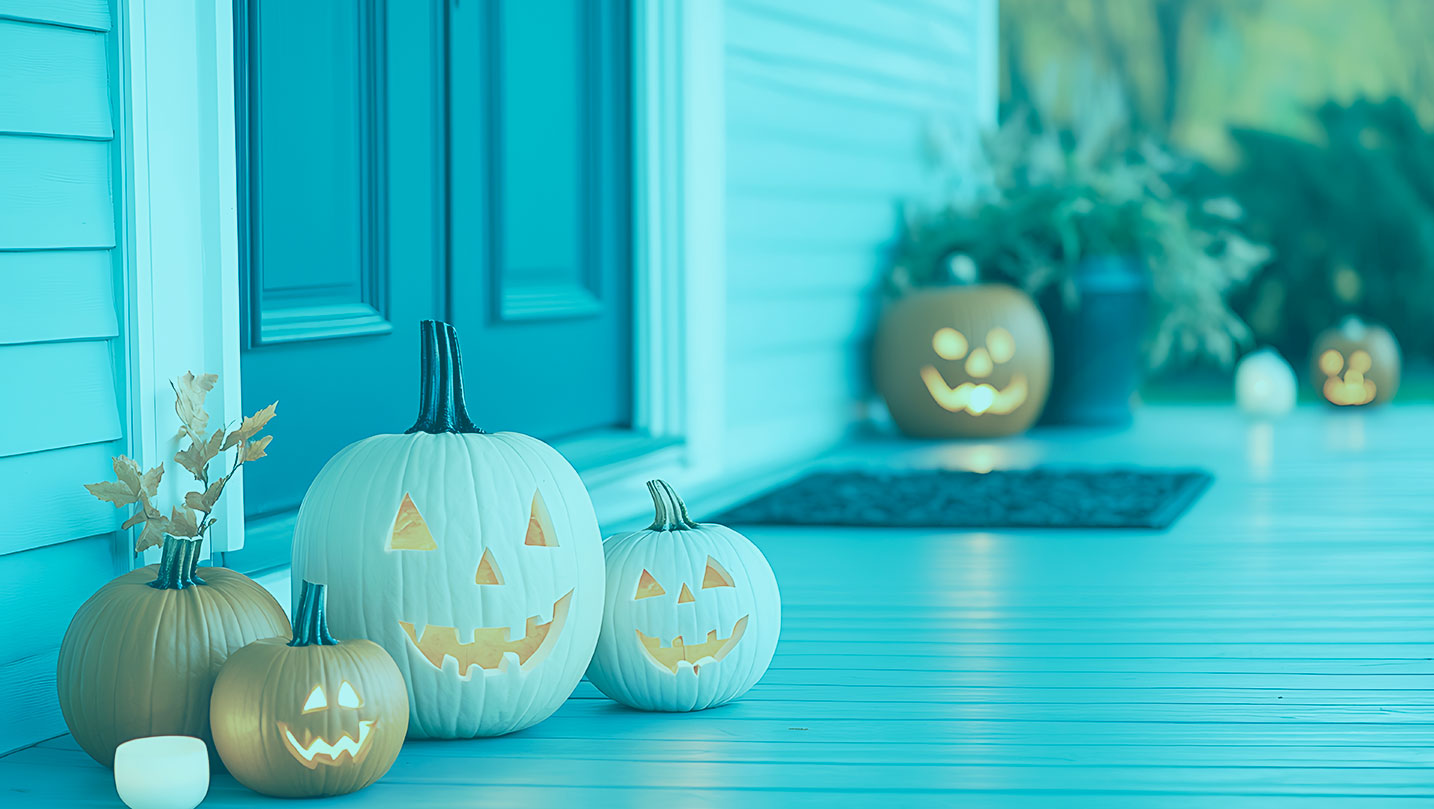Halloween is a beloved night for neighborhoods — costumes, decorations, doorbells ringing, laughter in the street. But for homeowners, it also brings increased foot traffic, dim lighting, open flames, and the annual spike in mischief and vandalism. A little preparation can greatly reduce the chances of injuries, fires, or property damage that could turn a fun holiday into an insurance headache.
Use this homeowner-focused guide to make Halloween both festive and low-risk.
Prep Your Property for Visitors and Visibility
The majority of Halloween injuries are not caused by ghosts, ghouls, or candy — they’re caused by real-world hazards like uneven steps, tripping hazards, and poor lighting.
Homeowners can reduce premises liability exposure by:
- Removing garden hoses, toys, pumpkins and décor from walkways
- Sweeping wet leaves from stairs and porches
- Tightening loose handrails
- Using friction tape or mats on potentially slick steps
- Propping storm/screen doors open so children don’t get hit when entering/exiting
- Replacing burned-out exterior bulbs before the 31st
Think of your walkway as a “temporary public footpath” for the night. Safe access is part of being a prepared host.
Light Strategically — for Safety AND Deterrence
Lighting serves two purposes on Halloween: guiding trick-or-treaters safely, and signaling to potential vandals that your property is not an easy target.
Smart lighting strategies include:
- Keeping walkways and steps well-lit even if you don’t participate
- Adding motion-sensor lights on the sides and backyard after trick-or-treat hours
- Using pathway lights instead of relying solely on porch bulbs
- Keeping blinds/curtains in their usual position so the home looks “normal” and occupied
Timed or motion-activated lights reinforce that someone is alert — even if you step out briefly.
Decorate With Fire Safety in Mind
Candles, paper décor, and dry leaves are a classic Halloween combination — and a classic fire hazard.
Reduce fire risk by:
- Swapping open-flame candles for LEDs or glow sticks in pumpkins and lanterns
- Keeping decorations away from heaters, porches, curtains, and exits
- Checking electrical décor for safe certification (UL listed, no frayed wires)
- Leaving exits clear in case an evacuation is needed
Halloween fires are real and often preventable with simple swaps.
Reduce the Chances of Vandalism and Mischief
National data shows vandalism claims rise noticeably on Halloween. Cars are the most frequent target, but homes are not immune.
Homeowners can deter unwanted “tricks” by:
- Parking vehicles in a garage or driveway instead of the street when possible
- Locking cars and removing valuables from sight
- Installing or activating visible cameras and alarm systems
- Trimming shrubs or trees that offer concealment
- Bringing in portable yard items like bikes, grills, and lawn equipment
- Staying home or arranging for a neighbor to watch the home if traveling
Often the appearance of surveillance or occupancy is enough to make a would-be vandal move on.
Pet Management Protects You and Your Guests
Even a calm dog can be triggered by the constant doorbell, costumes, or crowds. A frightened or protective pet can cause bites, injuries, or escape attempts — all of which can create liability for the homeowner.
To prevent issues:
- Keep pets indoors and away from the front door
- Use a crate or closed room if the animal is anxious
- Provide sound or light inside the space to keep them calm
- Avoid highly restrictive pet costumes that impair movement and cause stress
If You Participate in Trick-or-Treating — Host Safely
For homes handing out treats, a few extra habits help minimize risk:
- Keep the porch light on and pathway clear
- Avoid loose cords or props where kids walk
- Offer wrapped treats only; avoid homemade goods for unknown visitors
- Consider a separate table at the end of the walkway if you want to reduce front-door congestion
This is where kid-safety intersects homeowner-liability — good hosting reduces accidents.
If You Do NOT Participate — Signal Clearly and Securely
Some homeowners opt out — which is fine, but unclear signals sometimes lead to frustrated visitors.
Best practice for non-participants:
- Turn off porch lights but keep perimeter lighting for security
- Add a polite “No Trick-or-Treating” note away from the steps (so kids don’t approach first)
- Avoid leaving the exterior completely dark, which can invite vandalism
Final Thought: Safety Prep is Easier Than Cleanup
Halloween doesn’t need to be spooky for homeowners. With lighting, path prep, fire-safe décor, pet control, and a little deterrence for pranksters, the night can stay festive without prompting a future insurance claim.
A prepared home is not just safer for the community — it protects the homeowner as well.
Happy Halloween — and may your only surprises be the fun kind.
Sources:
https://www.thezebra.com/resources/home/halloween-home-security-tips
